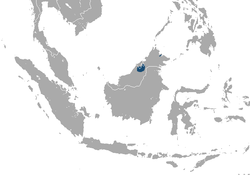This article relies largely or entirely on a single source .(December 2023) |
| Bornean pygmy shrew | |
|---|---|
| Scientific classification | |
| Kingdom: | Animalia |
| Phylum: | Chordata |
| Class: | Mammalia |
| Order: | Eulipotyphla |
| Family: | Soricidae |
| Genus: | Suncus |
| Species: | S. hosei |
| Binomial name | |
| Suncus hosei (Thomas, 1893) | |
 | |
| Bornean pygmy shrew range | |
The Bornean pygmy shrew (Suncus hosei) is a species of shrew in the family Soricidae. [1] It was named for zoologist Charles Hose.
